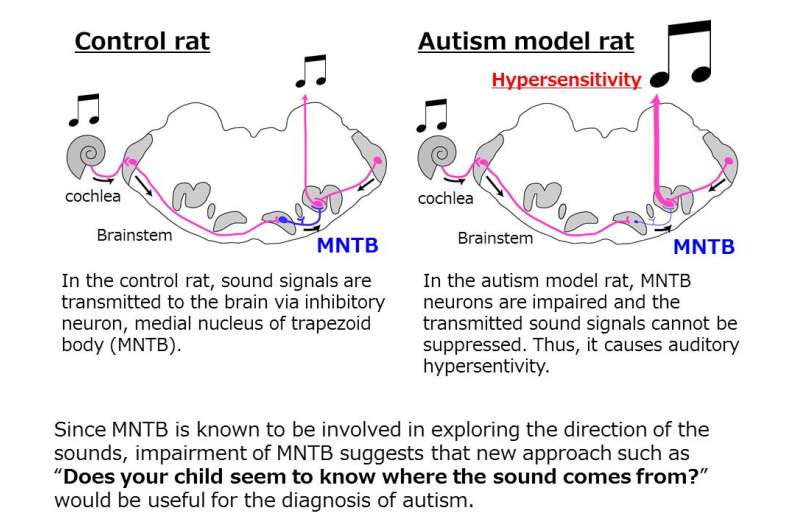New method for the diagnosis of autism found

Auditory hypersensitivity is a major complication in autism. Researchers at Mie University in Japan have demonstrated, using a rat autism model, that morphological abnormality of the auditory pathway is involved in this impairment. More importantly, this nerve pathway is responsible for the exploration of so-called sound localization. The researchers suggest a new diagnostic approach for autism such as asking the parent, 'Does your child seem to know where the sound comes from?'
Autism is a neurodevelopmental disorder characterized by impairments in social interaction, communication and sensory abnormalities such as sensitivity to sounds (auditory hypersensitivity). Despite intense research, the causes are still unknown. Therefore, autism diagnosis depends on a detailed interview by the doctor, which is very subjective. Thus, simpler interview approaches are required.
The research group has traditionally produced autistic model animals and has clarified various features of autism. This time, based on their research results, they found what seems to be the cause of auditory hypersensitivity in the rodent brain for the first time. There are two kinds of pathway in the brain: One is excitatory and the other is inhibitory. In autistic model animals, abnormalities were found in the "inhibitory" pathway, which was presumed to be the reason for auditory hypersensitivity.
This abnormal region in the autism model animal brain also plays a role in localizing from which direction a sound is heard. Therefore, asking the parents if their child seems to know where the sound comes from makes possible a much more clear and precise diagnosis. No special medical equipment nor chemicals are necessary, so it can be introduced immediately as a new approach to the interview.
More information: Michiru Ida-Eto et al, Mechanism of auditory hypersensitivity in human autism using autism model rats, Pediatrics International (2016). DOI: 10.1111/ped.13186


















